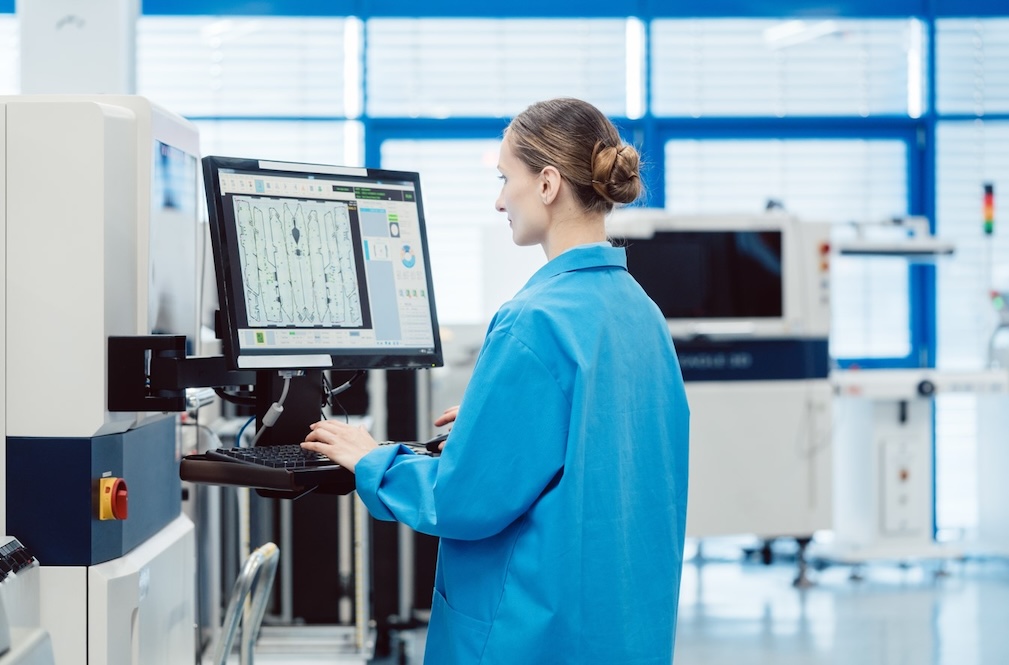EOL (End-of-Line) testing plays a key role in ensuring product quality at the end of the manufacturing process. This testing phase ensures that only defect-free products that meet specifications are delivered to customers. With EOL testing equipment, problems can be identified in time to avoid costly rework and customer complaints. EOL testing is a comprehensive verification process that tests the functionality, performance and appearance of products coming off the production line. It aims to detect defective items, identify gaps in the manufacturing process and continuously improve product quality. Here's a summary of what you need to know about EOL testing equipment and the process!
The EOL testing process
Precise and well-thought-out EOL testing is the foundation of any successful manufacturing process. The following is a closer look at the steps involved in this critical process.
The first step is to get the DUT to the test station. This can be done by operator or robotically, then the product under test is identified and its configuration is scanned. This ensures that the necessary checks can be carried out considering the item's specific characteristics.
Then come the functional tests, where we examine the basic functionality of the product. We perform various input-output tests with different input parameters. We observe whether the device responds according to the specifications in all cases. This is also where any hidden problems come to light.
During the performance tests, we test the product under real conditions. We measure and evaluate key performance indicators and compare them with expected values and tolerances. This way we make sure that the product will not only perform flawlessly but also efficiently.
The main function of end-of-line test stations is to filter out defective, non-conforming products at the end of the production line. After the test, the measurement results are automatically evaluated to determine whether the product is defective. Malfunctioning devices or parts are of course not sold, but further study can be of great help in detecting possible type defects.
Finally, the test results should be carefully documented. A detailed report is drawn up, which can later provide valuable information for continuous improvement.
As can be seen, the EOL testing process is a complex, multi-step process, with every detail being key to producing reliable, high-quality products. Precision and thoroughness pay off here!
EOL testing equipment and other tools
Specialised hardware and software solutions are required to perform EOL testing effectively. These target devices ensure that tests can be performed accurately, reliably and quickly, minimising the possibility of human error.
Hardware components of test stations
Test stations are always unique and tailored to the product or product family. The most important hardware components include sensors and measuring devices that precisely measure various product parameters.
Commonly used sensors include, for example, limit sensors, which play a major role in mechanical movements such as joining or moving a product. Measuring instruments include oscilloscopes, multimeters and spectrum analysers, which can be used to analyse electrical signal waveforms, voltage and current levels to determine the functional characteristics of a product.
In addition to the measuring instruments used for electronic tests, it is often necessary to have specific receivers, load units or even a climatic chamber adapted to the product. These instruments allow for a high-fidelity simulation of the real environment, which is essential to determine the correct functioning of the product.
EOL testing software
In addition to hardware, software that controls and supports testing plays a key role. These programs allow tests to be easily designed and run, and results to be efficiently evaluated and documented.
Modern EOL testing software provides a visual interface for building test programs. This allows engineers to easily create the necessary tests, combining different measurement and control steps, without the need for programming skills. The software then automatically runs the test program, ensuring consistency of results.
The software also handles the large amount of data generated during the tests. The results are automatically recorded and stored, allowing later analysis. The software can also monitor limits and immediately indicate defective products, making the operators' job easier.
The hardware and software tools used in EOL testing work together to provide reliable, high-accuracy quality control, contributing to the high quality of the products the company manufactures.
EOL tester from ProDSP
ProDSP's EOL testing solution can ensure the highest possible quality on our partners' production lines. This compact and user-friendly system allows for fast and reliable testing of devices, ensuring that only impeccable products are delivered to customers.
The ProDSP EOL tester combines the latest technologies for efficient and accurate operation. The software can be easily configured according to the parameters of the product, giving you the flexibility to test different types of DUTs. The system automatically performs the necessary measurements and functional tests and evaluates the results.
With the intuitive user interface, production line operators can use the ProDSP EOL tester with minimal training. Detailed reports on test results provide valuable data for optimising production processes and continuously improving product quality.
Contact us and we will help you find the best solution!




